Unit Study Planning Printables
A couple of weeks ago, I shared how I develop unit studies (along with some printables), keeping true to the Reggio & Montessori spirit.
Today, I want to share with you a set of more comprehensive Montessori unit study printables.
This set of printables is ideal if you are doing a full-fledged unit study that incorporates all subjects. (And can be used separate or as a complement to our monthly subject planner.)
While I personally don’t believe that every single subject needs to be covered when you decide to have a bit of fun with a theme, I do think that it can be helpful to consider the different subjects when planning, as too often, we miss golden opportunities to engage in learning.
For example, I recently realized how much we needed to mix things up in our peace curriculum. I had an awesome group of kids and we were really coasting on some great cooperative behaviours, especially for preschoolers, and I was failing to engage them in a higher level of emotional and social intelligence.
By adding it to my unit study planner, I am now going to reflect on how I can use the children’s current interests to engage them in a deeper conversation in regards to peace and emotional intelligence.
In page one, I list practical life, self-care, art, music/finger plays, literature and peace.
Practical Life
We have over 25 Montessori Practical Life lessons which you can find here. Practical Life activities help children work on fine and gross motor skills while also refining a skill that they can use in every day life, from sweeping to scooping to pouring or carrying things safely. They also help build focus and an understanding of carrying a task through to completion.
Kids love these activities because they often allow them to do “grown up” things in a fun, play-based way.
Self-Care
Although self-care is a component of practical life, I believe it needs more attention, especially for younger children, so incorporating it into a unit study can be a great solution.
One of our favorite self-care activities has been our DIY Teeth Models which we added play dough to for a brushing activity, or for an even simpler activity, our Flossing with Duplo Blocks.
Art
Art can be explored as a provocation, as a guided craft, or you can brainstorm special materials to leave out. Whatever suits your vision and goals.
You can also incorporate artist studies into this area – we have some Frida Kahlo-inspired art activities and a Pablo Picasso workbook here.
Music and Finger Plays
These are essential elements of our daily circle time, along with reading a book out loud together.
My friend Deb over at Living Montessori Now has an awesome collection of Montessori-inspired Circle Time activities, including lots of themed songs that you can use for your unit studies.
Literature
I list any language activities we do here, as well as special books that I want to leave out or read with the kids.
We have several book lists for kids as well as book-inspired activities, which you can find here.
Gross Motor
Gross motor is essential — some children really have a hard time engaging in gross motor play, while others won’t need any encouragement making the most out of outdoor play. For both, it is still vital to consider gross motor challenges and how you can best engage the children throughout the day — not just at outdoor time.
For example, is there a yoga move that could be “inspired” by the unit? Can I encourage the kids to safely move around child-sized furniture to set up a play invitation, or make room for another activity? Are there gross motor skills that need work — like walking on a line, should we do a themed version?
Sensorial
Sensorial could be twists on the Montessori Sensorial Curriculum, or it could be just noting environmental sensory input, or planning some sensory play.
We have over 100 sensory play ideas for kids here.
Math
I try to balance out our “academic” categories with curriculum-based activities and more fun, hands-on activities to allow kids to see their knowledge at play.
For example, if you’re working on fractions, that’s a great time to set up a pizza shop activity! This Magnetic Fraction Pizza game would be great, too.
Cultural/Geography
In addition to peace, culture and geography are often overlooked, so I think it is wonderful to look for opportunities to incorporate them into unit studies that might not have an obvious cultural or geography theme. In Montessori, history is included in cultural studies.
(You can find our Montessori Geography curriculum checklist here.)
Science
For younger ages, I try to only do hands-on science activities and then also work through our Scientific Method printable as we go. (That printable can be found in all of our science activity posts.)
You can find our hands-on science activities here.
Play
While you can always incorporate learning ideas in your play, I think it’s really important to ensure that there are lots of fun, play-based activities available at any time. Some weeks will lean more academic, but having this as a category on these sheets encourages us to remember the importance of play in children’s daily life.
Play invitations can also be really good at showing what the children have understood from other categories, and lead you to explore new interests with them. For example, how different children interact in a pretend shop can give you a great indication as to whether they are interested in the math component of the cash register, the food component, the social (cultural) component of shop interactions, the practical life components of setting up and working with the food, and so on.
The final sheet has a bit more planning room for lessons, modifications, “on the shelf” and environment.
Lessons
This is where I note specific lessons that we are going to have and ensures that I don’t try to plan too many structured lessons in a week. I prefer to look for opportunities throughout the day to link what the children are doing to bigger concepts, rather than give too many structured lessons.
I also tend to repeat a lesson a couple of times throughout a week, perhaps with a slightly different presentation or examples. This helps the children understand the concept better and avoids overwhelming them with too many new concepts before they have fully grasped previous lessons.
Modifications
This could be a modification based on how the children respond to the lesson, or a planned modification for a child who needs special consideration. I also plan “variations” on my lessons so that we can repeat the same lesson without it seeming too boring or repetitive.
On the Shelf
This is a Montessori concept, but it applies to any learning environment: what materials are already available or will I make available for this unit study?
For example, if you’re planning a Bird Unit Study, perhaps you’re going to add some Bird figurines and identification cards to the shelf, or you’ll swap out a spooning or sensory material with bird seed.
Environment
Environment should take note of what elements or changes should be made to the environment to facilitate the unit study. Do you need to move some furniture? Do you want to put out some art or visual provocations? Does anything need to be removed?
I also love using themed snacks and food to introduce and encourage healthy foods at lunchtime — using peas to represent tennis balls during our “/t/ is for tennis” unit had every child eating their peas with gusto. I plan themed lunches in this section, too.
Don’t forget to grab your free printable unit study planners here.
And Pin this Post for Helpful Tips on Unit Study Planning:
I’d love your feedback on these unit study planners – would you add anything to make them better?
For more awesome home learning inspiration, check out our Montessori Practical Life lessons or our Kids’ Yoga Series here.
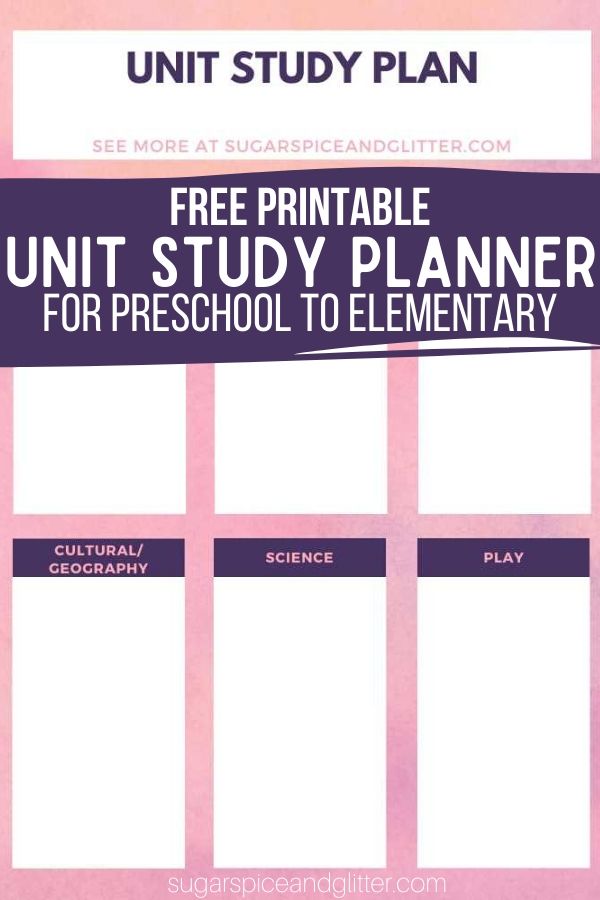
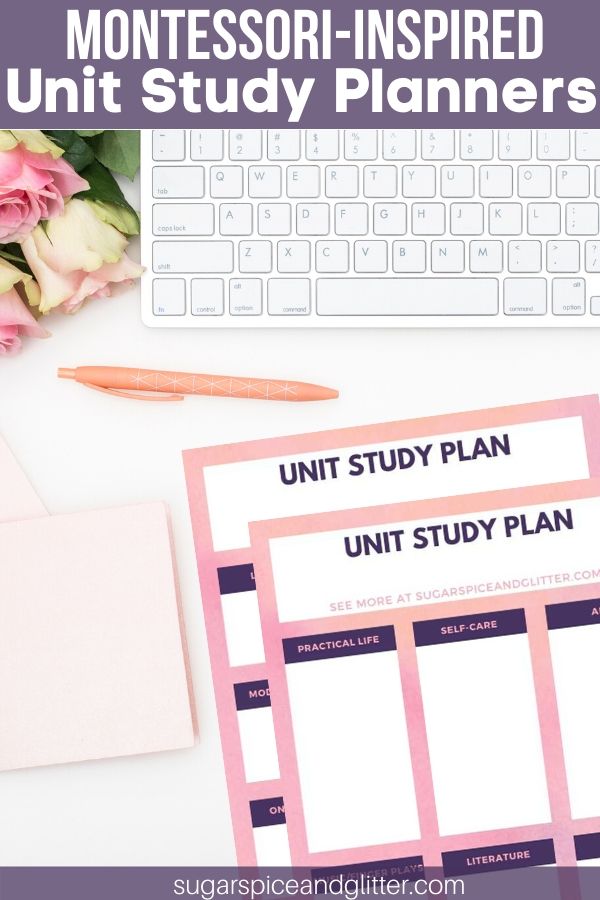

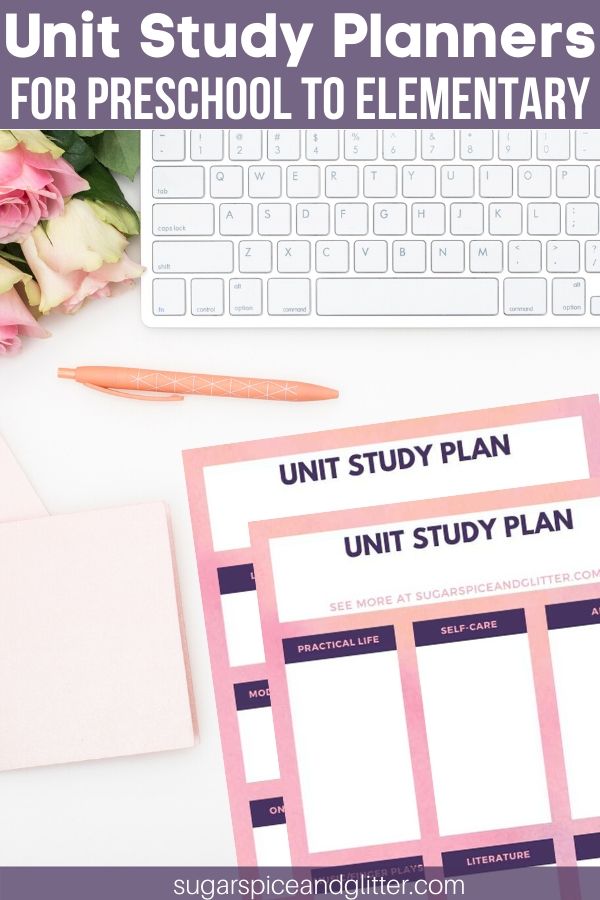



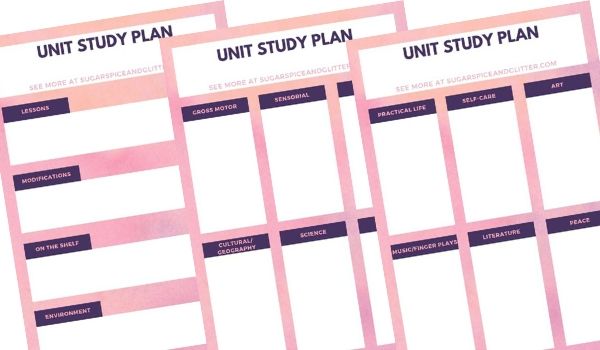
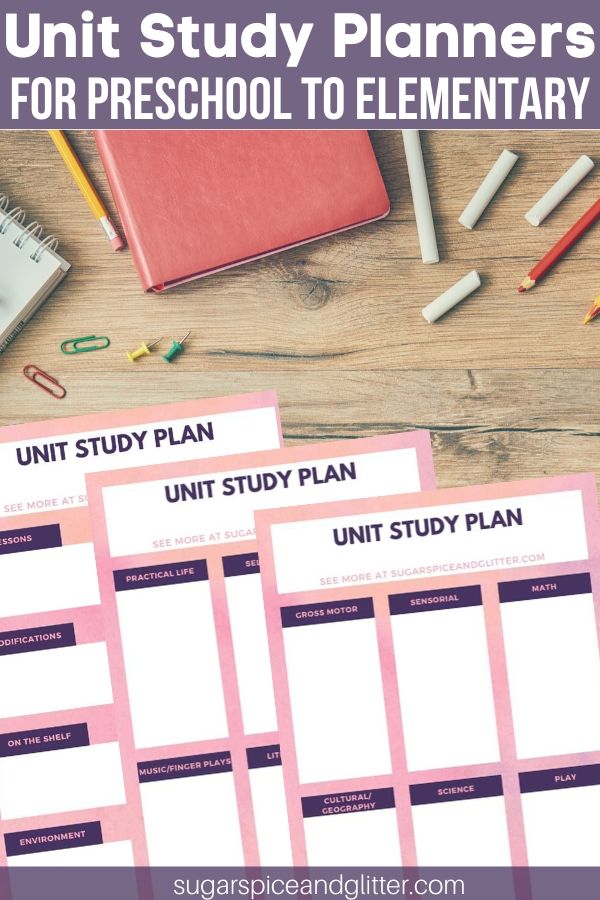
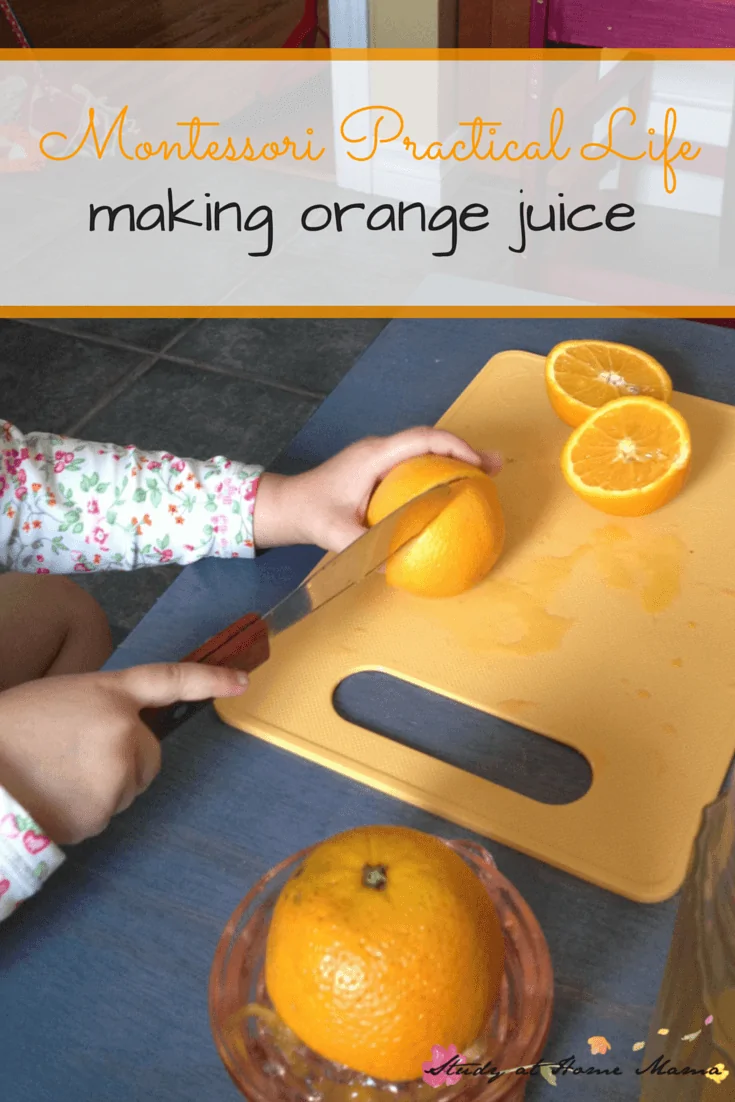
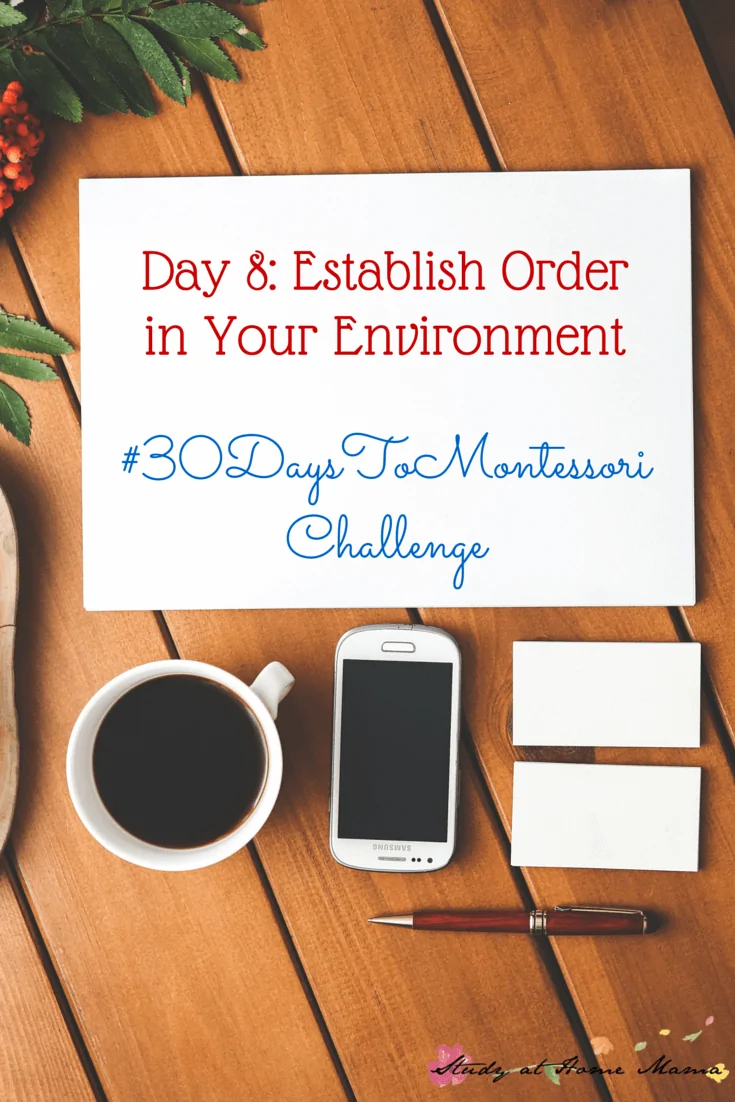
This looks great! But I can’t see a link to download the printables?
If you click on the images, they will open in a new window – but I’ll edit the post to explain that 🙂 Please let me know if they still do not work and I will upload them in a separate file.
This looks very exciting and incredibly exciting Jennifer! Please let us know when you have linked them so we can open them up or uploaded them in a separate file? Many thanks. jennifer.pickard5@gmail.com
When you click the picture, the new window only takes you to the picture, no links 🙁
Hi Jessica,
Wanted to let you know that we changed up the printables for this year – and the links are working 🙂
no links – you can click on them and they reappear bigger but don’t open.. Im excited to see them!!!
Hi Connie,
Wanted to let you know that we changed up the printables for this year – and the links are working 🙂
This page just won’t load, so I can’t even get to the printable 🙁
Hi Danielle,
Wanted to let you know that we changed up the printables for this year – and the links are working 🙂
I’m not seeing any images, just words
Hi Victoria,
Wanted to let you know that we changed up the printables for this year – and the links are working 🙂
Hi! I’m excited to see the printable but the images open only that page and we cannot see the whole document. Please let us read your work! Thank you 🙂
Hi Annelise,
Wanted to let you know that we changed up the printables for this year – and the links are working 🙂
Hi, thanks for the printable.
It’s inspire me to organize my sturdy planner for my daughter ?
*study
Cannot see any printables, keeps reloading original page?
Hi Sue,
Wanted to let you know that we changed up the printables for this year – and the links are working 🙂
This looks great, I’m very interested but I can’t download the printables.
Hi Angeles,
Sorry for the issue – we changed up the printables for this year – and the links are working 🙂